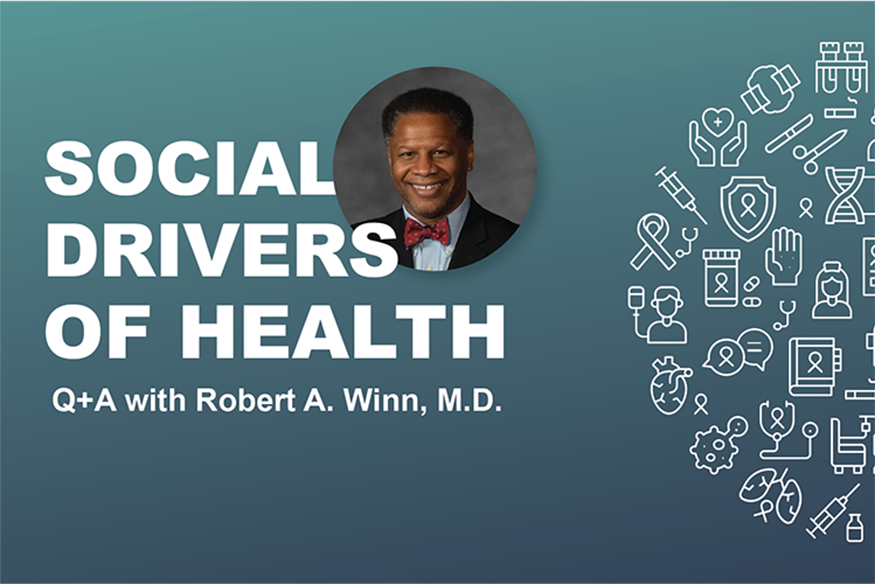Back to Alliance Media and Publications
Social Drivers of Health: Driving Change in Terminology
July 3, 2023

Robert A. Winn, M.D., Co-Director of the Alliance for Equity in Cancer Care provides insight into a growing shift from terminology around social determinants of health to social drivers of health. A leading expert in optimizing cancer health care outcomes, Dr. Winn is nationally recognized for his work in spearheading interdisciplinary approaches to cancer disparities research. He also serves as the director and Lipman Chair in Oncology at the Virginia Commonwealth University VCU Massey Comprehensive Cancer Center.
From your perspective, how would you explain the difference between social determinants of health and social drivers of health in lay terms?
Social determinants and social drivers are often used interchangeably, but by the very nature of the word, social determinants of health are predetermined or fixed. Social drivers of health are similar in that they affect health outcomes, but it's important that these influences aren’t treated as finite. It's why we do what we do. Every day, we are working to move the needle towards ensuring a more equitable and accessible health care system for everyone.
Social drivers of health are an important part of understanding and evaluating disparities in health outcomes. What steps can be taken to bring more awareness to these factors?
There is an important intersection between place and space, one that is largely misunderstood in health care. Collaboration with traditional “non-health” sectors such as transportation, education and housing is a way to bring more awareness to issues – including housing insecurity, food deserts and a lack of reliable transportation – and how these factors relate to one’s ability to not just access but also to receive quality, patient-centered care. Initiatives like the Alliance for Equity in Cancer Care are a great example of evaluating barriers to care from multiple perspectives. Only then can you effectively evaluate where there are gaps and identify solutions to begin closing them.
We know there are a number of social and economic factors that influence timely access to high-quality cancer care. How can health care professionals and navigators incorporate this language into practice to better address these issues?
As anything does, language evolves over time. As providers and healthcare professionals, we are trained to adapt but must be responsive to patient needs. The adoption of new terminology is a critical part of ensuring health literacy for our patients and is just as important as implementing new technological approaches or practice guidelines. We must empower our communities and patients to advocate for themselves and be confident and engaged in their treatment – patients should feel like they are in the driver seat.
How can the phrase social drivers make a difference in the treatment and outcomes for populations disproportionately affected by cancer?
Despite significant scientific progress in understanding why health inequities exist, disparities in health outcomes remain a major public health issue with some gaps becoming even more prominent. Black Americans are more likely to die from cancer than white Americans. Simple changes like that of “determinants” to “drivers” may feel unnecessary or even unsubstantial at first. But change doesn’t happen overnight.
We can’t work in silos – we need to share our findings more broadly and be open to collaborations with partners outside of the medical community. Where does your target population live, work, play and pray? We need to start there, where the individuals spend their time. That’s what is being done through the work of the Alliance.
How can the conversation about social drivers advance other health-related topics or issues faced by largely underrepresented populations?
Simply put, through patient advocacy and policy change. We must enable individuals to join the conversation and empower them to do so. Those negatively affected by social drivers of health are more often than not burdened by several factors. It's not often that only food insecurity is a concern without a lack of reliable transportation or other challenges impacting access to care. It's part of our job to bring effective change leaders together at all levels. This includes patients and community members, health care teams, insurance providers and policy makers – even faith leaders and tech entrepreneurs. We must truly work as an alliance to move the needle towards equitable access, not just to cancer care, but to all health care.
Written by: Jennifer Drummond